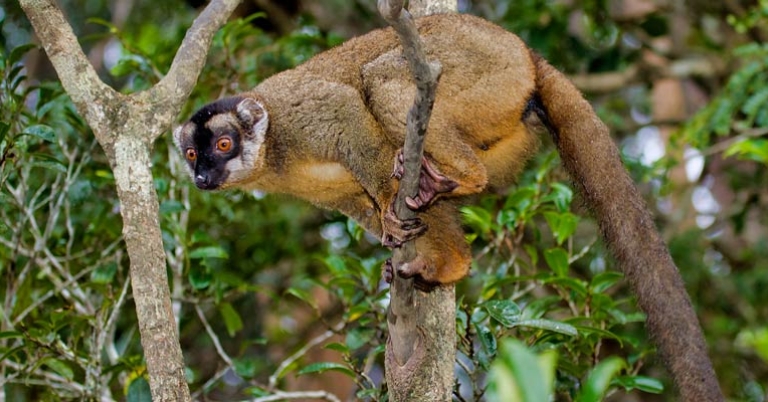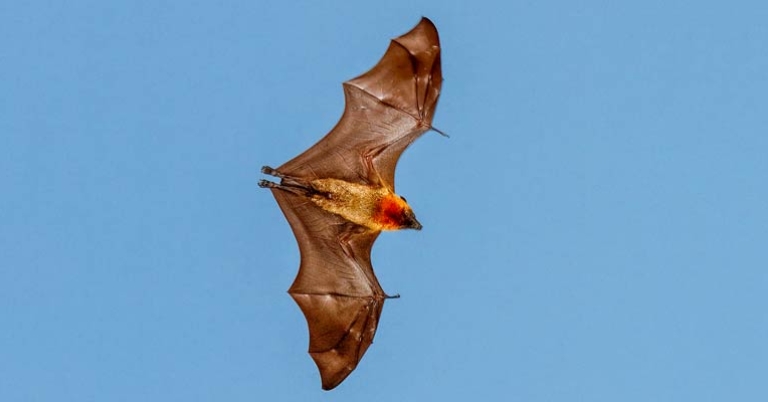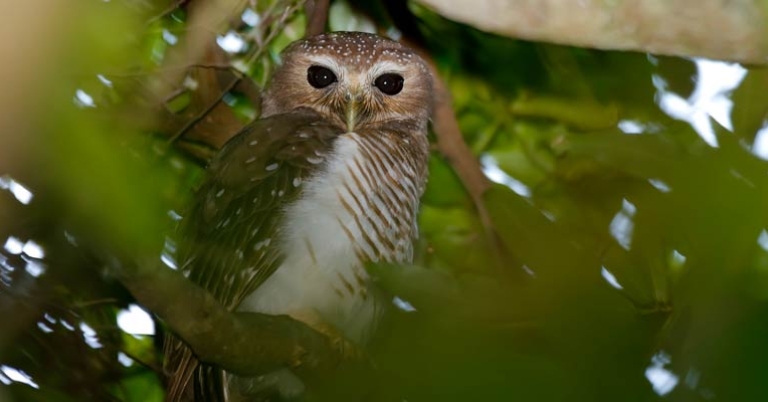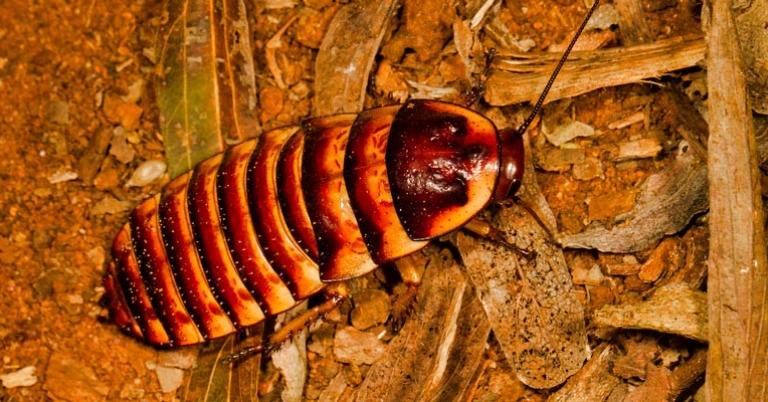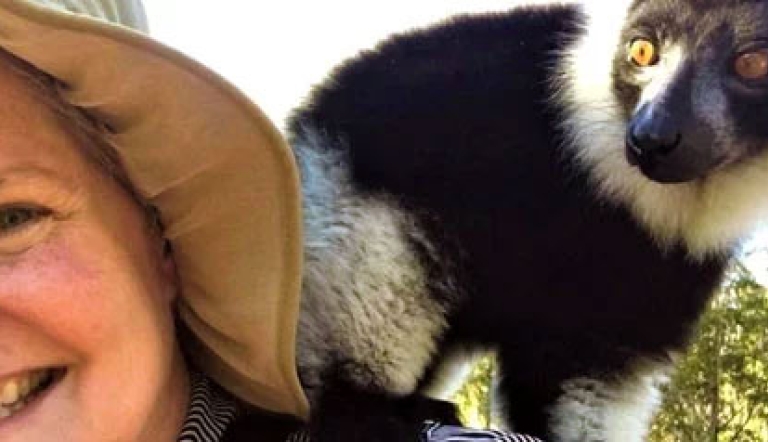Madagascar | Optional Post-trip Extension to Ankarafantsika National Park
About this trip
Continue your Madagascar photography experience with this optional post-trip extension to Ampijoroa on the country's north coast!
Highlights
- Spend several days exploring Ankarafantsika National Park, famous for its special lemurs as well as an impressive number of endemic and rare birds and plant life.
- Take a boat cruise on Lake Ravelobe and look for water birds like Humblot’s Heron, Madagascan Malachite Kingfisher, and Madagascar Fish-Eagle.
- Watch for nocturnal lemur species and other wildlife during night hikes.
Meet your leaders
 Ann Simpson
Ann Simpson
Ann Simpson is a professor at her alma mater, Laurel Ridge Community College, specializing in biology, anatomy, and physiology. She and her husband, Rob, own Simpson’s Nature Photography, organize nature photography and natural history tours around the world, and were the premiere photographers leading workshops in the national parks for Canon. The duo have also authored and provided all the photography for 19 books, primarily national park nature and wildflower guides, and a wildflower app for Farcountry Press and Falcon Guides.
 Rob Simpson
Rob Simpson
Rob Simpson is a professor emeritus at Laurel Ridge Community College, where he teaches field biology courses in ornithology, botany, mycology, and ecology. He is program head emeritus for the Outdoor and Nature Photography Careers Certificate, and along with Ann, they are passionate about teaching professional photography techniques. Their images have been published in hundreds of magazines including National Geographic, Time, Audubon, and National Wildlife. Their books and photos have won numerous awards, and on the natural history tours they coach participants on how to bring home award-winning photos.
$3,870
Per person
About this price
Land cost only. Does not include round-trip airfare to and from destination.
Single room supplement $200
What makes us different
Wildlife up-close
Service anytime
Designed for photographers
Low stress travel planning
Support local communities
Flight arrangements
Daily Itinerary
Print ItineraryAntananarivo
Ampijoroa
Ampijoroa
Ampijoroa
Mahajanga
Depart
Pricing
Print Pricing$3,870
Per person
About this price
Land cost only. Does not include round-trip airfare to and from destination.
Single room supplement $200
What's Included
- Accommodations with private bathrooms
- Arrival and departure transfers based on individual flight schedules
- Bottled water or water refill station during transfers
- Full time guide for the duration of your program
- Internal flights relevant to itinerary
- Non alcoholic beverage with meals
- Private transportation and driver for the duration of the program
What's Not Included
- Carbon Offset
- International airfare
- Tips
- Travel Insurance
- Trip cancellation coverage
Pricing Details
A $200 per person deposit and enrollment form is due to hold your space on this trip. This deposit is refundable 134 days prior to departure excluding a $100 cancellation fee. Cancellations after this date are non refundable.
Holbrook Travel strongly recommends the purchase of travel protection for medical emergencies while traveling and to protect your investment. Please note the purchase of Cancel for Any Reason Coverage or to exclude pre-existing conditions with Trip Cancellation coverage may require policy purchase within 10-14 days of your initial deposit, depending upon the provider.
Single room supplement $200
Final payment due date: March 18, 2024
Travel Info
Print Travel InfoEntry & Exit Requirements
U.S. citizens must have a passport valid for at least six months past the date of exit from Madagascar.
A visa is required for entry into Madagascar and may be obtained upon arrival for stays up to 90 days. The cost for a single-entry visa for a visit up to 30 days is $37, 31-60 days is $45, and 61-90 days is $55. Visa fees must be paid in cash. It is best to have the correct amount if possible because you are unlikely to get exact change. This fee is subject to change without notice. You will also be required to provide a passport photo, and your passport must have at least three blank visa pages to accommodate entry/exit stamps and your visa.
If you are not traveling with a U.S. passport, please be sure to check with the Madagascan Embassy for requirements based on your nationality.
Health Information
IMMUNIZATIONS
The Centers for Disease Control recommends that all travelers be up to date on routine vaccinations such as measles-mumps-rubella (MMR) vaccine, diphtheria-pertussis-tetanus vaccine, varicella (chicken pox) vaccine, polio vaccine, and your yearly flu shot before every trip.
There are no vaccinations required for entry into Madagascar unless you are arriving from a country where yellow fever transmission is a risk (including transiting 12 or more hours through the airport of a country where yellow fever is a risk).
The CDC recommends hepatitis A, hepatitis B, and typhoid vaccines for most travelers visiting Madagascar. The CDC also recommends a single lifetime booster dose of polio vaccine for adults who previously completed the full, routine polio vaccine series.
Please consult your physician for additional information and recommendations based on your individual circumstances.
MALARIA
The CDC warns that travelers to Madagascar may be at risk for exposure to malaria. Malaria is caused by a parasite found in Anopheles mosquitos, which are active from dusk until dawn. Prevention is twofold: the use of anti-malarial drugs and the prevention of insect bites. Cover exposed skin with lightweight, long-sleeved shirts and pants, consider treating clothes with permethrin, and use an insect repellent containing an active ingredient like DEET or picaridin. Apply sunscreen first, followed by the repellent (preferably 20 minutes later). If you choose to use an anti-malarial drug, as recommended by the CDC, see your physician for a prescription.
OTHER INSECT-BORNE ILLNESSES
In addition to malaria, the CDC warns that travelers may be at risk for several insect-borne illnesses carried by mosquitos, ticks, and fleas, such as dengue fever, chikungunya, African tick-bite fever, and others.
The CDC recommends that travelers to Madagascar protect themselves against insect bites using the measures noted above. After spending time outdoors in grassy or wooded areas, the CDC recommends showering and conducting a full-body check for ticks. If you find a tick attached to your skin, safely remove it as soon as possible.
SUN EXPOSURE
The effects of the sun can be damaging to the eyes and skin. Spending time outdoors exposes you to the sun’s harmful ultraviolet (UV) rays, even on cloudy days. To protect yourself from the sun, use a broad spectrum sunscreen of at least SPF 15, protect skin with clothing, wear a wide-brimmed hat and sunglasses, and drink plenty of fluids.
Respiratory Illness Protocols
Please review our Respiratory Illness Protocols page, which explains our policy and procedures if you or another traveler should develop symptoms of a respiratory illness during your trip. Your participation in a Holbrook Travel program indicates that you are in agreement with these protocols.
Resources
Print ResourcesPacking Recommendations
Everyone has personal preferences when it comes to packing; for this reason, the information below is offered as a general guide and not a definitive list. You know yourself best: Use your discretion and pack what you think will serve you, based on your personal preferences and specific itinerary.
You can find many of the items below in our Gear Store.
CLOTHING
Bring enough clothing suitable for the length of your program. If you prefer to pack light, note that many hotels offer laundry services (at additional cost). If you plan to hand-wash items, remember that humidity may delay drying time.
Pack clothing that can be worn in layers to adapt to weather changes throughout the day. Clothing that wicks away moisture and dries quickly is recommended.
- A combination of short-sleeved and lightweight, long-sleeved shirts for sun and insect protection
- Shorts
- A combination of lightweight, quick-drying long pants for sun and insect protection and medium-weight long pants for the cooler highlands
- Undergarments
- Sleepwear
- Lightweight jacket or sweater/sweatshirt (or heavier weight if visiting high-elevation areas)
- 1-2 bathing suit(s) for the beach, if applicable, plus many hotels have pools
- Socks – Bring extra pairs.
- Shoes – Consider your specific itinerary when choosing footwear. For most programs, you’ll likely want at least one pair of comfortable, closed-toe walking or hiking shoes suitable for forest hikes and walking over cobblestones or other uneven terrain. Sturdier hiking boots may be appropriate for more rugged itineraries. In addition, many participants opt for a pair of sturdy sport-strap sandals (e.g. Keens, Tevas, or similar) and/or casual flip-flops or sandals. If you’re visiting the beach, you may also want a pair of aqua socks, reef walkers, or water shoes.
- Lightweight rain jacket, hooded poncho, and/or windbreaker; the rainy season is typically November to April, but it can rain at any time
- Visor or wide-brimmed sun hat
- Bandana, scarf, or neck gaiter
Personal Toiletries
Pack toiletries based on your personal preferences and habits.
- Shampoo, conditioner, lotion, deodorant/antiperspirant , etc. – If possible, avoid strong fragrances if you are sensitive to insect bites and to be considerate of your fellow travelers.
- Soap and washcloth or a small, quick-drying microfiber towel – Washcloths are not standard in all hotels. If you normally use a washcloth, you may wish to bring one from home.
- Hairbrush, comb, hair ties, shower cap
- Toothbrush and toothpaste
- Razor
- Ear plugs, especially if you are a light sleeper
- Personal hygiene products
- Insect repellent with DEET or picaridin (see note below about treating clothing with permethrin)
- Sunscreen and lip balm with SPF – If you’ll be in the ocean, we strongly urge reef-safe sunscreen.
- Aloe vera gel
- A travel pack of tissues – also useful as napkins or toilet paper if needed
In addition to your personal toiletries, it is useful to pack a small medical kit, which you can easily prepare. Helpful items might include: bandages, antihistamine, a pain reliever, motion sickness and/or altitude sickness medication (if you are prone to either), anti-diarrhea medicine, individually wrapped pre-moistened towelettes and/or hand sanitizer, antibiotic ointment, anti-fungal cream, moleskin for blisters, eye drops, tweezers, a mini sewing kit, and an extra pair of disposable contact lenses or eyeglasses if you wear them.
Days before you leave home, you may wish to consider spraying any clothing, socks, and shoes that will be worn in lowland, tropical sites with permethrin, an anti-parasite medication, to repel irritating pests and prevent the spread of disease. A recommended brand is Sawyer. Carefully read all instructions before use. Please note permethrin is highly toxic to cats and fish, and some aerosol products may be harmful to birds. Side effects may include minor itching, burning, or redness. You may want to use a laundry marker to label and keep track of which socks are permethrinized. Only one application per item is necessary; permethrin on treated clothes remains effective through several washings. Permethrin should NOT be applied directly to skin.
Miscellaneous
Remember to pack valuables such as your passport, cash/credit cards, and medications in your carry-on luggage.
- Passport and photocopies of all travel documentation
- Personal insurance card and travel insurance information
- Money – ATM/credit card, traveler's checks, and/or cash; small bills in good condition are recommended
- Prescription medicines (if applicable), with a copy of the prescription
- Yellow fever certificate (if required; only if traveling from a country where yellow fever transmission is a risk)
- Sunglasses with strap
- Small day pack for hikes and excursions
- Flashlight and/or head lamp
- Travel alarm clock or inexpensive waterproof wristwatch with alarm – Not all hotels provide alarm clocks.
- A pocket calculator or phone to assist with conversions and currency exchange
- Binoculars with lens cleaner
- Reusable water bottle
- Non-perishable snacks
- Pocket-knife or multipurpose tool - Pack in your checked luggage
- Zip-top style bags – useful for packing toiletries, sorting clothing, storing damp or muddy shoes, or as a dry bag for protecting electronics
- Notepad or travel journal and pen
- Music or reading material for down time, long bus drives, or on the airplane, and a portable bright light to read by
- Collapsible walking stick with rubber tip
- A small quantity of laundry detergent if you’ll be washing clothing by hand
- Money belt
- Voltage converter and plug adapter
- Chargers for electronics

Questions
Contact Debbie Jordan at 866-748-6146 or debbie@holbrooktravel.com
